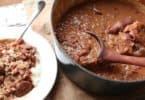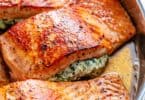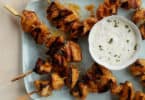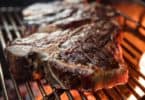When you need something quick, easy, and delicious, fresh fish fillets are a wonderful base for building a meal. Although there are many fish in the sea, salmon is a good choice given its health benefits and versatility.
Salmon is a wonderful source of healthy Omega-3 fatty acids and protein, and is low in saturated fat, as opposed to red meat (Daily News Central: Salmon Healthy Fats). However, it is just as hearty and filling, and has a more “meaty” texture than other white, flaky fish. Salmon is also recommended by the FDA and the EPA as a low-mercury fish choice, which even further increases its benefits (Mercury in Fish and Shellfish).
Contents
Salmon Preparation Techniques
Just as steak houses allow their cooked steaks to “rest” for a period of time before serving, so should the at-home cook do when preparing salmon. All fish will continue to cook even after it has been removed from the heat source, since the outside will continue to warm the inside for about 5 minutes, depending on the size of the fillet. In general, a 1-inch thick salmon fillet will cook for about 5 minutes per side.
Preparation methods for salmon vary across the board. Suggested techniques include:
• Pan-fried
• Seared
• Blackened
• Grilled
• Poached
• Sous Vide
• Broiled
• Croquettes
• Burgers
The Basics
The most basic recipe for salmon fillets is a simple pan-fry. Unlike most fish that are best when fully-cooked, flaky, and opaque, salmon reaches its peak flavor and texture when it is cooked rare or medium. This is an important tip to remember, as a fillet that has been cooked too long will be chewy and less flavorful.
For basic, pan-fried salmon, try this recipe:
Ingredients:
4 tbsp. olive oil
1 tbsp. butter
4 center-cut salmon fillets
Kosher salt
Freshly ground black pepper
Special equipment: Cast iron pan*
Instructions:
Warm olive oil and butter in skillet over high heat. Season salmon fillets with salt and pepper. Sear salmon until a golden crust forms, about 4 to 5 minutes on first side. Flip fish, season other side, and continue cooking until medium-rare, about 2-3 minutes more, depending on thickness. Salmon should change color from a deep pink to a light, creamy pink when cooked, but should retain a slight translucency in the middle.
Remove fillets from pan and allow to “rest,” tented with aluminum foil to keep warm, about 5 minutes.
*While a cast iron pan is not an absolute necessity, it adds a depth of flavor that cannot be reached by a stainless steel pan. Because of cast iron’s physical properties, it is able to withstand higher temperatures without hot spots or burns, and creates a lovely crust on the outside of whatever food is cooking. Cast iron is porous, so it will absorb the oils and flavors of whatever has been cooked in it over time, which lends to it a natural non-stick quality, as well as additional flavor and character.
Serving Suggestions
If you are ready to move beyond the basics, try salmon with any of these complimentary ingredients:
• Fillets Topped with Pesto
• Burgers (created with green peppers, garlic, egg, soy sauce, and lemon juice) Topped with Sesame Mayo
• Glazed with Brown Sugar and Mustard
• Fillets over Pea Puree with Mint
• Fillets with Citrus Herb Butter and Sautéed Wild Mushrooms
• Served with Red Wine Sauce
• Glazed with Scallions and Soy Sauce, Topped with Crispy Coconut
Endless recipes are available online, so just get a little creative, think about the flavors you want to use, and put your basic skills to the test!
<>







